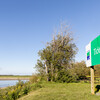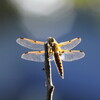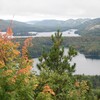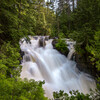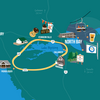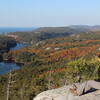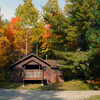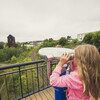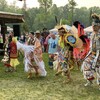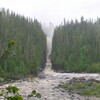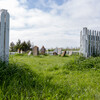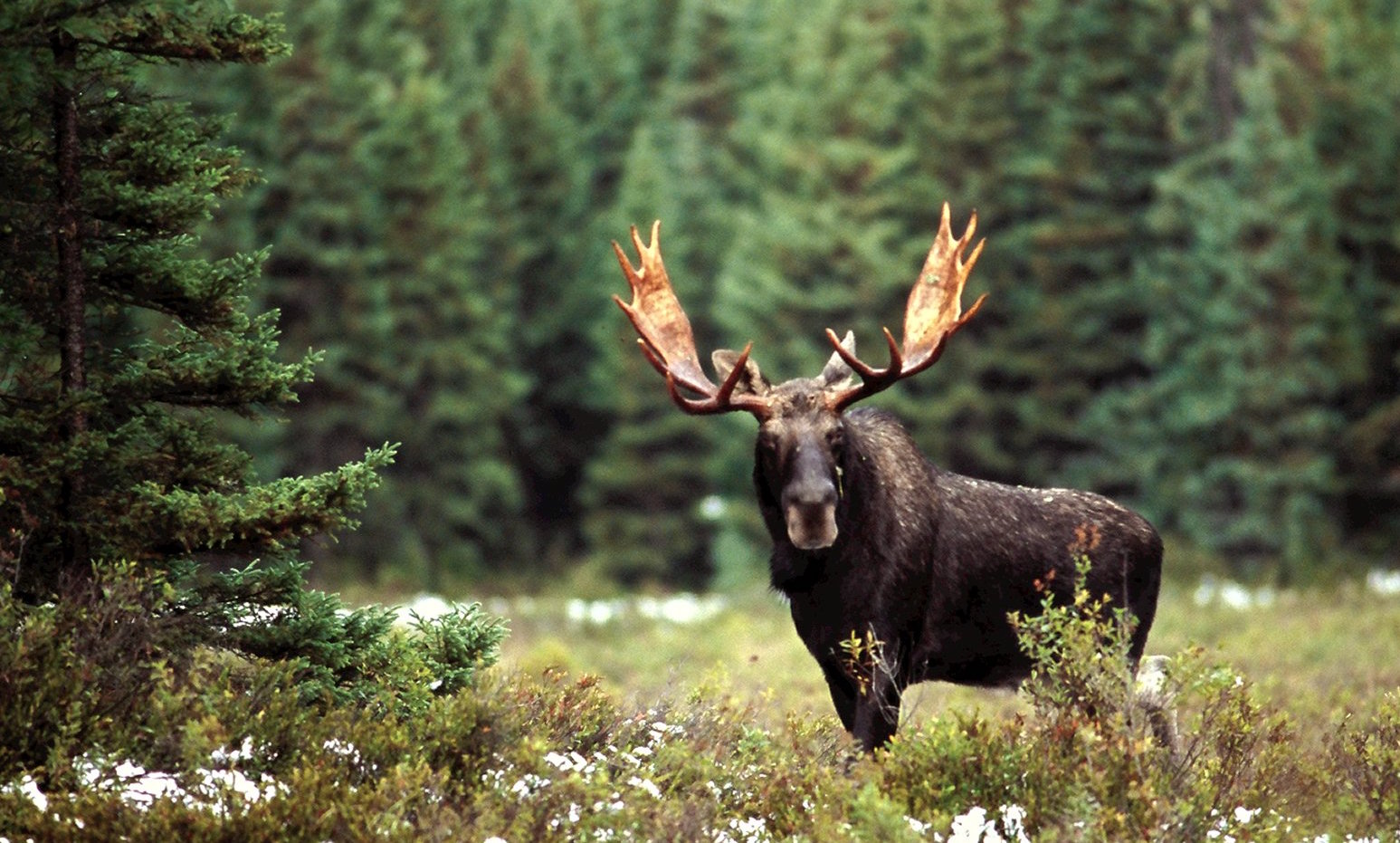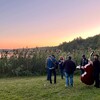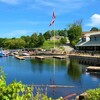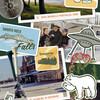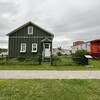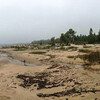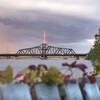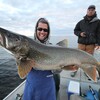
5 Butterflies to Spot in Northeastern Ontario
Everyone loves spotting a butterfly in the wild—but to truly appreciate them, it’s important to recognize the close relationships they have with wild plants. You can’t talk about butterflies in Northeastern Ontario without mentioning the world’s most recognized butterfly, the Monarch, and its relationship with milkweed.
These famous butterflies have evolved to rely on milkweed species as their host plant, able to sequester the toxic cardenolides ingested in the larval stage and use it to their advantage in the adult stage against would-be predators. The incredible migration of Monarchs, their ability to ingest toxic compounds, and their aposomatic (warning) coloration are just a few examples of how closely linked plants, ecosystems and insects really are.
The evolution of pollination strategies between insects and plants is specific, diverse and fascinating, contributing to the massive web of biological diversity that makes the nature around us so special. So when you’re hiking in the boreal forest, foraging for edible mushrooms, birding, freshwater fishing, or bikepacking your way through woodland roads in Northeastern Ontario, keep an eye open—it’s just natural to see some butterflies along the way!
While Monarchs can be seen in Northeastern Ontario during the summer months nectaring on a large variety of plants, there are also many other species you’ve got a good chance of spotting on your visit.
The Red Admiral, Vanessa atalanta

The Red Admiral is a stunning and easily identifiable butterfly, widespread over much of North America, Eurasia and North Africa. It is spotted regularly around North Bay and northern Algonquin Park; even as far north as Timmins and Cochrane. The Red Admirals in Northeastern Ontario spend their winter months in the southeastern United States, migrating north to lay eggs on their preferred larval food plant.
With its coal black base, white spots on the top of the dorsal forewings and solid scarlet vermillion bands, this species cannot be mistaken for any other. Red Admirals frequent open habitats such as weedy, brushy fields and forest edges, gardens, and parks. They are seen in the warmer months nectaring on a large variety of plants in numerous habitats, such as dandelions, coltsfoot, fruit trees, black-eyed susan, butterfly bush (Buddleia), New England aster, goldenrod, bull thistles and willow sap.
As the season wears on, Red Admirals start to lay their eggs at the base of stinging nettle plants (Urtica dioica), rolling up the leaves to form a camouflage leaf nest. This species has a fast and erratic flight, and in the fall can be seen foraging nectar to gather resources for their migration.
Mourning Cloak, Nymphalis antiopa

The Mourning Cloak is a striking species, one of the first butterflies out and about as the weather warms up—they are a true sign of spring. Large, with a wingspan of around 8cm, they are a beautiful dark brown with a ragged goldish-yellow edge, lined by bright blue spots, and are often seen flying so early that there may still be snow on the ground.
While most resident butterfly species in Ontario overwinter in the egg or chrysalis stage, Mourning Cloaks overwinter as adults. They can emerge from their shelters in tree cavities, loose tree bark, or nooks in a barn or a shed as early as mid-March, when the temperatures start to increase above freezing, searching out sunny areas to forage on sap from maple or birch trees.
These are one of the longest lived butterfly species, with a lifespan of up to 10 months. Mourning Cloaks are extremely varied in their habitat requirements, as they are common all over North and South America, and Europe, nectaring on a wide variety of asters, currants, fallen fruit and tree sap. Look for them around Hackberry ( Celtis spp.), Willow (Salix spp.), Cottonwood (Populus spp.), apple, rose, and many broadleaved trees and shrubs. Mourning Cloaks can be seen in just about any habitat, including city parks, gardens and along the side of country roads.
Milbert’s Tortoiseshell, Aglais milberti

Another common butterfly in Northeastern Ontario is the distinctly colored Milbert’s Tortoiseshell butterfly. This generalist species is widespread across Canada, ranging as far north as James Bay in the northeast. Dark brown with a fiery yellow-orange border, the wings are outlined with a row of violet-blue crescents with a scalloped wing edge. In the dark brown sections of the dorsal forewing are two orange bars with black between, a pattern strongly resembling cat eyes. Its undersides are shades of brown, resembling layers of bark.
Milbert’s tortoiseshell can be seen flying in Northeastern Ontario from April to October, and, like the Mourning Cloak, the adults overwinter to emerge in spring. While stinging nettle is used as a host plant, these tortoiseshells can be seen on a large variety of native nectar plants such as goldenrod, coneflowers, black-eyed susan, asters, pearly everlasting, pussytoes and wild bergamot (Monarda fistulosa). Milbert’s tortoiseshells can be found close to any habitats where stinging nettles grow—along waterways, parks and gardens.
Common Wood-Nymph, Cercyonis pegala

The Common Wood-nymph is widespread across North America, found in every province except Newfoundland. While this species can vary greatly in the shades of brown and the number of eyespots, it is easily identified as a large butterfly with a wingspan of about 2 inches, in shades of light to dark chocolate brown. With its wings closed, the underside colouration strongly resembles the many shades and textures of wood. It has twin eyespots with white pupils on the forewing; on females, the eyespots are rimmed in yellow with a row of eyespots on the hindwing.
Common Wood-nymph larvae feed on a variety of grasses including switch grass (Panicum virgatum) and big bluestem grass (Andropogon gerardii) but are seen nectaring as adults on many different species of plants such as spireas, mustards, wild bergamot, Canada thistle, marigolds, willow sap and even aphid honeydew. Wood-Nymphs can be seen from mid-May to late September–peaking in mid-summer–and are fast fliers, meandering through flowery meadows and dry roadsides, amongst weedy flowering plants and grasses.
Canadian Tiger Swallowtail, Papilio canadensis

The Canadian Tiger Swallowtail is one of the larger species of butterflies in Canada, although not the largest. A very noticeable and easily identifiable butterfly, it has a 3.5 inch wingspan and is bright yellow with a black border and tiger stripes across the wings. The underside of the hindwings have striking orange crescents on the margins with an intense blue banding.
This species of butterfly has a very wide range and is found in all provinces and territories in Canada, even as far north as Moosonee. Canadian Tiger Swallowtails are enthusiastic “mud-puddlers”, congregating in the hundreds in the same puddles. Mud-puddling is a notable behavior in the ecology of insects, including butterflies, as it is something they do to forage for nutrients such as salts and amino acids that are important in their physiology. Often mud-puddling can be associated with sucking up the remains of carrion, dung, and soil.
Canadian Tiger Swallowtails have a wide range of habitats including open woodlands, roadsides and woody slopes, meadows and streambanks. They nectar on a great many plants, such as spreading dogbane, red columbine (Aquilegia canadensis), asters, common and swamp milkweed and many other plant species. Host plants for larvae include willows, birches, poplars and alders.
Learn More About Butterflies in Northeastern Ontario
Check out these local resources.
Pollinator Partnership Canada Ecoregional Planting Guide for Native plants and Pollinators for Algonquin and Lake Nipissing
Recommended Articles
The Seven's Best Hikes, Biking Trails and Lakes

7 Best Spots to Check Out in The Seven

Budget Bliss: Explore Northeastern Ontario Without Breaking the Bank

Bring Your Fam!

Time to Unwind: 6 Spa Havens to Discover In The Seven
5 Amazing Places to SUP in Northeastern Ontario

5 Amazing Bike Rides to Discover

Northern Lights in Northeastern Ontario

Northeastern Ontario's Best Pride Festivals

Fish for one of the World's Rarest Species of Trout

An Insider's Guide to Manitoulin Island

6 Small-Town Gems to Explore in Northeastern Ontario

11 Best Things to Do in Kapuskasing, Ontario


